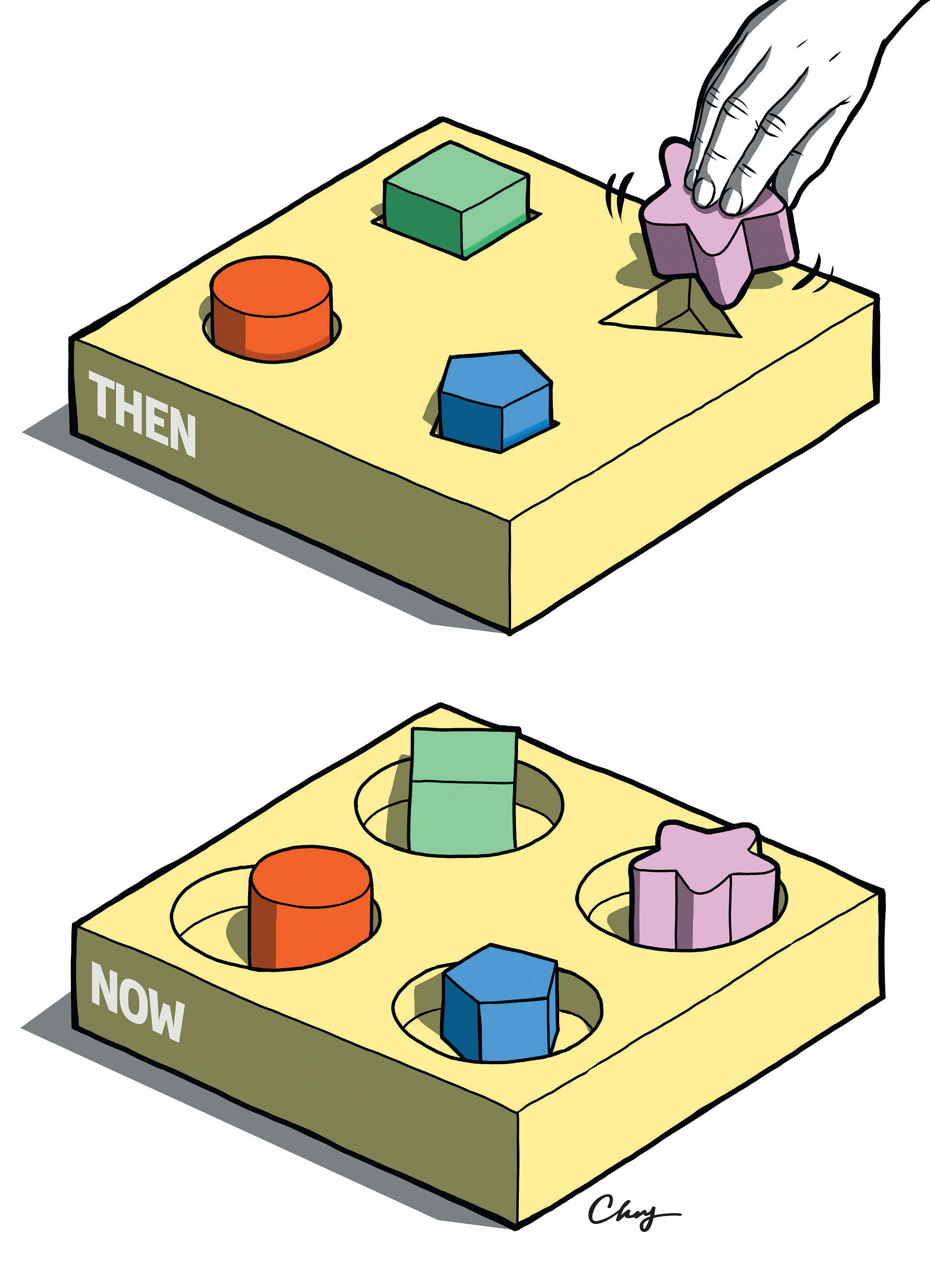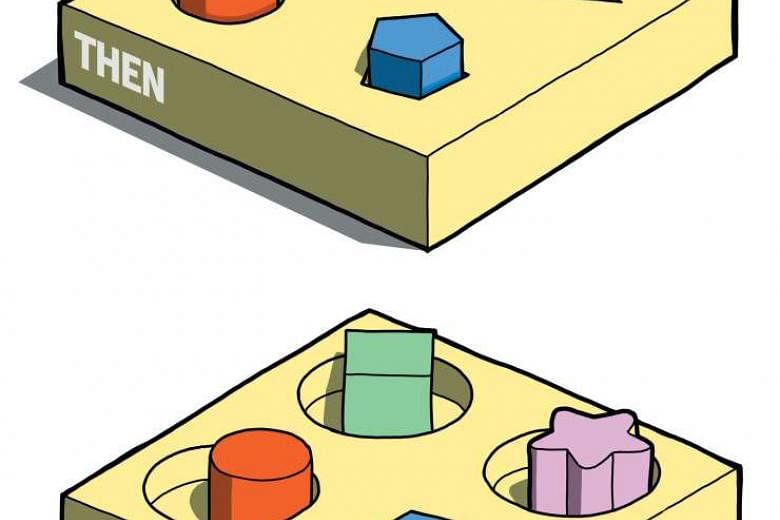Two examples of policy responses from public agencies over the past fortnight give pause to consider whether, and to what extent, the authorities are becoming more attuned to changes in society.
Two Wednesdays ago, the Government announced plans to rope in housewives and grandmothers to help fill a gap in manpower shortage in infant care.
The Ministry of Social and Family Development (MSF) will pilot a new role called "allied infant educarers", who will work with infant care centre staff to look after infants.
The ministry's Parliamentary Secretary Faishal Ibrahim told Parliament: "Some people with interest, aptitude and competence to care for infants may be unable to join the sector, either because they do not want to attend classroom-based training, or they lack the appropriate academic records."
Those who are keen will get on-the-job training from professionals with help from the Early Childhood Development Agency.
The scheme is a timely example of how policies and regulations are being adapted to better draw on the strengths and talents of individuals in the community.

It is also in keeping with the national effort to make learning a life-long endeavour, and to open up multiple pathways for individuals to pick up new skills in a more challenging economic landscape.
Could the changes have come sooner? Could they also have covered a broader range - to include home-based childcare efforts?
Three days after the announcement, a news item signalled how on one level, individuals are already stepping up to fill unmet needs in their neighbourhood.
Shin Min Daily News reported the case of a Housing Board flat in Toa Payoh that was allegedly being used to run an illegal night-time childcare centre.
The HDB told The Sunday Times last week it was investigating the case with the relevant authorities.
Regardless, while reports said the children at the flat were mostly of primary school age, though some were as young as five years old, the fact that a resident was trusted by his neighbours to look after their children points to how some people prefer someone they know to care for their young ones.
Better still if they are in the same block or close to home.
There have been calls to help those in this informal sector.
One came from Ang Mo Kio GRC MP Gan Thiam Poh during the debate on the MSF's budget two Wednesdays ago.
Could the ministry reconsider giving families and individual caregivers equivalent grants or subsidies given to infant care and childcare centre operators, he asked.
"These are parents who have family members or caregivers from their neighbourhoods who can help to look after their babies and children. To ensure these caregivers meet standards in caring for young ones, the ministry can organise a training and certification process for them," he said.
"Those who pass the training will then be entitled to the grants. People who provide such freelance caregiving services for children should be supported as professionals too."
Dr Faishal replied to say that some parents may prefer to have their children cared for at home, but said it was not feasible to extend such grants to home-based care.
"While our centres are governed by regulations to ensure quality and service standards, home-based care is more informal and based on mutual trust and support," he said.
"As home-based care is varied in nature, it is impractical to apply common standards."
But the recent report of the informal childcare centre flagged in the press begs the question: Should there be some standards in place for home-based childcare?
Would it not be better for both parents and children if informal caregivers can sign up for on-the-job training to ensure they have common skills?
There is time yet for the relevant agencies to consider an update so that by the time the first batch of allied infant educarers see their charges hit pre-school age, those who are keen can also sign up to help take on childcare roles.
The past fortnight also saw another instance of talent in the community being handled rather deftly.
Lasalle fine arts student Priyageetha Dia, 25, covered the steps next to the lift landing of her HDB block in Jalan Rajah with gold foil - without seeking permission from the authorities. Her work made headlines, and sparked a debate on whether it should be considered art - or vandalism.
Jalan Besar Town Council, which oversees the estate, made clear that while it appreciated Ms Dia's "desire to enhance her surrounding space", her actions were in violation of its by-laws.
Yet the town council postponed its scheduled cleaning of the block.
Town council chairman Lily Neo said it did not want to destroy the work before getting in touch with the artist.
Said Dr Neo, an MP for Jalan Besar GRC: "We are holding off the cleaning for a while as we are still waiting for her to respond, to see how we can work together to display her creativity in other ways, such as wall murals."
This rather open-minded response is refreshing, where another agency might just write it off as an outright act of vandalism.
Granted, the work was on a staircase, and did not create lasting damage while graffiti would.
Yet the approach from those in office was one of engagement, and far from outright rejection.
Nominated MP Kok Heng Leun cited Ms Dia's work in Parliament as an example of "ground-up community art", calling it a piece that "engages and enlivens the community in a positive manner".
"Should our policies not adjust, so as to allow more community engagement and participation in the arts?"
I was surprised when Parliamentary Secretary for Culture, Community and Youth Baey Yam Keng said he was "very encouraged" by Ms Dia's "creativity to enhance our living spaces", even as he said the town council had to address residents' concerns, and said the National Arts Council would be happy to work with her to facilitate her art.
When Mr Kok pressed the issue further, minister Grace Fu said it was "basic courtesy" for any artist who wants to do community art to seek permission from the property owner, adding: "Both parties can sit down and see how to best meet the needs of both".
Perhaps attitudes have indeed changed - and the authorities recognise that talented individuals can contribute to the community in other ways, for the better.
My colleagues who reported on the issue found that while several of the artist's neighbours felt she should have sought authorisation for her work first, others found the work "tasteful" and "beautiful".
There have been numerous examples of neighbourly innovations in HDB estates in recent years - from sharing meals to jointly decorating common corridors during festive occasions. Could art fulfil a similar function, adding further sparkle to public housing estates?
In Ms Dia's case, she acknowledged that had she sought authorisation to do her work on the staircase, the result would not have sparked the public dialogue it did. This episode prompts the question: Could there be a sandbox - say, a block of old flats whose residents have moved out under the selective en-bloc redevelopment scheme - for artists to express themselves?
Some regulators in other sectors have taken the lead.
For instance, the Monetary Authority of Singapore has initiated a regulatory sandbox for financial technology (FinTech) to encourage experimentation in FinTech, so that promising innovations can have a chance to be tested in the market and possibly be considered for adoption on a wider scale.
One hopes these adjustments policymakers seem more willing to make of late are a signal of greater appetite for experimentation and innovation in a wider range of sectors.


